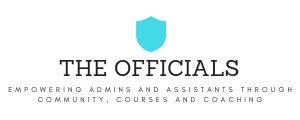Strategic Transparency
STRATEGIC TRANSPARENCY
There’s a tendency to encourage everyone to “over-communicate”, in fact our society is largely defined by everyone’s inclination to overshare on social media and IRL. The key to remote communication isn’t to share whatever comes to mind or every detail of your work. It’s to understand how to strategically share information that is relevant and important.
If you’re not used to working at home, the sense that you need to continuously be in contact with your executive or co-workers is likely to be overwhelming at first. However, engaging in this kind of anxiety fueled oversharing is likely to be counterproductive. The information that you communicate should be concise and goal-centered.
Questions are important, but before you pose one consider whether or not you’ve reached out to other appropriate people to source relevant information. If you can anticipate your executive’s response, have you already addressed those – in other words, you should be one step ahead.
Concise communication should include the minimum amount of information your executive needs to make a decision. Rather than including every detail of an email thread, distill and then distill again. What are the key points here? I always consider the financial, strategic and political/relational implications of a decision and add those details so they can make an informed choice.
Goal-centered communication should be focused on achieving something concrete and specific. You should be able to point back to something tangible in your executives workflow that this points back to. This doesn’t mean you should communicate FYI’s but it does mean that they should be limited and be relevant to a specific goal. If you don’t know what those goals are it’s critical to work so you can understand them. Having a handle on the big picture will inform not only what you communicate but how you communicate.
